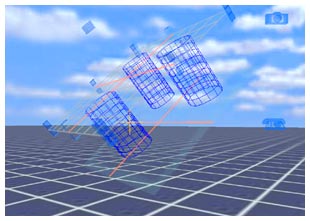I spent too much time writing up and posting on the Second Life forum a lengthy follow-up to a question I posed at yesterday’s Second Life “Town Hall Meeting”. It’s way too long to post in its entirety, so I’ll attempt to condense it and post the “summaries” I included.
My original question and the response:
Csven Concord: What guidelines does LL currently have in place regarding the marketing and advertising of RL products in SL, and any measures (if any) to limit the impact of RL advertising on SL’s newly emerging internal markets?
David Linden: People can advertise in SL with prior approval. That’s something that Robin manages.
David Linden: Currently we are not actively pursuing external advertising.
David Linden: next
Not really the answer I was hoping to receive. So here are the first two “summary” requests that have to do with the Linden Lab requirement to submit for approval any inworld advertising of a real life product or service:
A) Could Linden Labs please promulgate the Guidelines for submitting and gaining authorization to advertise inside the Second Life simulation?
B) Could Linden Labs please maintain a listing of RL brands which have been given authorization to advertise inside the Second Life simulation?
The disconnect in all this is that there are already many branded products in the Second Life simulation. Which are authorized and which aren’t? I suspect many of them are unauthorized advertisements as well as being illegal violations of copyright and trademark. But Linden Labs is careful in their Terms of Service to avoid responsibility for user content; they don’t “police”. And their position is both practical and understandable. It also creates an interesting Catch-22 situation for them: how can they filter content but also claim lack of control over content?
More importantly to me, it also creates a problem for Second Life’s inworld content creators. They’re competing in a virtual market increasingly filled with real world brand names. That makes selling original product all the more difficult. And what is their recourse? Well, as far as I can see, they have no officially documented means to address this issue. To file a complaint of copyright infringement to discourage this unfair practice, the complaintant is required by the Terms of Service to include what appears to be a legally-binding statement that not only is the information provided correct (the alleged intellectual property violation) but that the complaintant is the copyright owner or agent of the violated intellectual property. That’s pretty nonsensical to me. The practical result is that content creators are negatively impacted by these rules, and incentives for creating content under these conditions are also negatively affected. Why bother creating a new brand of virtual product when anyone can rip a logo from some real life corporation and plaster it all over their versions of a virtual product and get all that free brand equity… and not have to be overly concerned with the objections of legitimate inworld brands. In a funny way, this reminds me of leather jackets I’ve seen in third world countries – with, for example, “Fruit of the Loom” labels stitched inside (if only they’d known for which products those labels were intended).
So, the summary for that problem was simply:
C) Could Linden Labs please explain this apparent conflict of interest between the handling of content and the acknowledged need to support content creation inside the Second Life simulation?
This is either going to be really interesting or it’s going to be really ignored. I personally see a simple way to deal with this: allow anyone to report intellectual property violations. Of course that would require Linden Labs to be more vigilant in their efforts to filter content. And with the potential to get hit with a liability uppercut, I suspect not getting pinned in a corner is a strategy. Let’s see how long that lasts.

